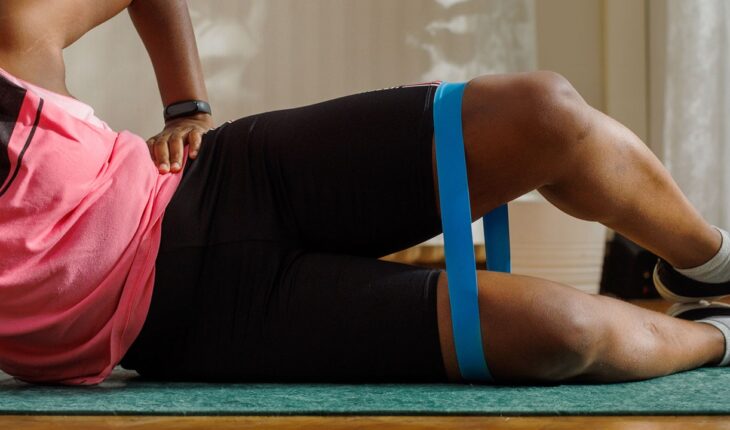
The clam shell is also commonly used in the rehab and prehab world, meaning it’s prescribed to help people recover from pain and injury, as well as prevent those issues in the first place (more on that below).
One thing the clam shell definitely isn’t is a mobility exercise. Yes, it involves moving your glute muscles through a range of motion, which may possibly boost mobility there, but that’s not the main idea of the exercise. Instead, think of that as “just an added benefit,” Dr. Betiku explains.
What are the benefits of the clam shell?
By incorporating clam shells into your routine, you can bolster the strength of your glutes, get them ready to work, and reduce your chances of aches, niggles, and issues in a whole bunch of areas.
Here’s why: The general population generally has weak glutes, thanks to spending a lot of time sitting, Dr. Betiku says. That’s a problem, since this powerhouse muscle group is designed to support a bunch of other areas of the body — including your lower back, hips, and knees, Dr. Betiku explains. So when their strength isn’t up to standard, you can have pain and injuries in all those surrounding regions, since they’re not getting the support they need. This is why the clam shell is ubiquitous in rehab and rehab settings. It’s effective for both preventing and alleviating a host of issues throughout the body, whether that’s knee pain that flares up with running or lower back pain that’s triggered by toting your child’s car seat.
The banded version of the clam shell also hits your external obliques, which kick in when you complete rotational movements, like running, walking, playing sports or even everyday life tasks like picking up and carrying a heavy bag of groceries. When the external obliques (plus other core muscles) aren’t strong enough for these tasks, your lower back can start to compensate, Dr. Betiku explains. That can lead to back pain, providing yet another example of how the clam shell can really come in handy.
Long story short: Doing clam shells on the regular can help lower your injury risk and generally just make you a better mover — both in and out of the gym.
What are some mistakes people make with the clam shell?
The clam shell may seem like a simple exercise — and in a lot of ways, it is — but it’s not foolproof. The biggest form error, according to Dr. Betiku, is using other body parts to complete the movement instead of allowing the glutes to be the stars of the show. This makes the exercise not as effective.
When done correctly, the only thing that should be moving is your top knee and top hip —everything above the waist and below the knee should be still, Dr. Betiku says. If you struggle with this, try doing the move alongside a wall: Press your head, upper back, lower back, and heels against it and perform the move from there. “The only thing that’s protruding away from the wall is your knee,” Dr. Betiku says. As you move your top knee up and down, keep everything pressed against the wall. This will ensure your glutes take charge.
How should you include clam shells in your workout routine?
This is another one that depends on your current activity level. If you’re new to exercise, do it with no equipment (use just your bodyweight) to start, aiming for 3 sets of 10 reps, Dr. Betiku says. If propping yourself up onto your forearm, like the below video shows, feels too challenging, rest your head on your bottom arm or a pillow. You can weave the clam shell into whatever workout you have planned, slotting it alongside other strengthening exercises, and repeat it as often as every other day.





